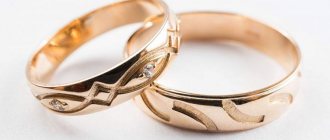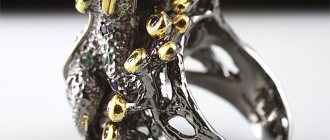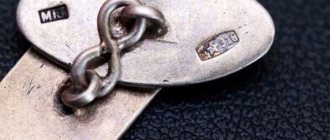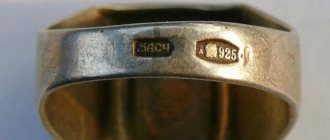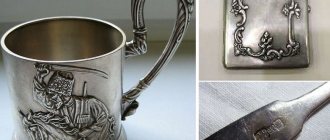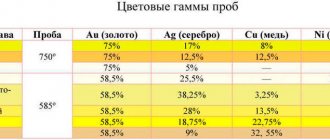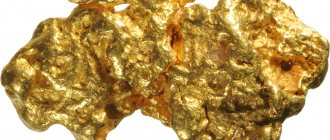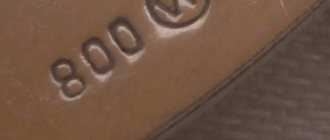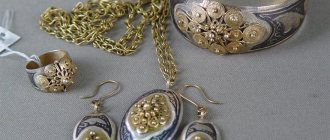Silver is one of the most popular metals in the world, discovered in ancient times. Centuries ago, it was worth more than gold, as the pure silver metal alloy was prized in the market due to its rarity. But, over time, people began to dilute the substance with other impurities. Therefore, there are now a sufficient number of samples of this substance.
Where did the name “sterling silver” come from, what is it? There are the following versions of the origin of the name. According to the first, the metal was so named because of the pound of sterling, which was in use in the Middle Ages. In the mid-12th century, King Henry 8 of England issued a decree according to which a coin made of 925 silver came into use. This alloy was considered equal to ordinary silver, from which money was then made. This pound sterling was used for large purchases.
The second version states that silver, which contained only 8% impurities, was produced in the Esterling region in Saxony (Germany) since the 11th century. The name came from this subject. The coins that were issued in the northern region of the country were used to pay with England during allied actions. The then ruler of the country liked these strong coins so much that he soon put them into use. Actually, two versions of the origin of the name of the metal follow from each other.
Sterling silver - what is it: sample, composition, properties, difference from ordinary silver
People have been using sterling silver products for centuries. Despite the specific name, the material is considered precious. Moreover, in terms of characteristics, such an alloy is not much inferior to 960-grade metal and occupies third position in the ranking of the most valuable of the silver group.
Women's 925 silver bracelet
Alloy
Many centuries ago, pure silver was used, but it is not durable and is easily deformed. The main advantage is its attractive appearance - the metal without impurities is characterized by a pure silver color and shines. Gradually they began to improve the composition in order to change the properties of the material. First, germanium, platinum, zinc, and titanium were added. We tried using boron and cadmium. As a result, we obtained metal of a high price category. This was facilitated by the use of expensive additives. However, for the consumer this innovation came as an unpleasant surprise.
Later, an alloy with the best characteristics was created; today it is considered the standard among all those containing Ag. This metal is called “sterling silver”. In comparison, none of the alloys stand out in this way, indicating a better combination of properties and appearance. The reference metal contains 92.5% silver and a small proportion of additives (ligatures), and copper is usually used in this capacity.
Sterling is an alloy of silver and copper in a ratio that allows you to obtain 925-grade metal. The remaining variants of metals (with a different alloy) do not have a special name, but are simply considered precious. Moreover, they also receive a 925 sample.
Physical properties
The presence of an alloy means that the metal will differ from the material of the highest standard - 999. It acquires slightly different properties. The main characteristics of sterling silver:
- increased hardness;
- fusibility;
- ductility, due to which decorations of openwork design are created;
- average resistance to mechanical damage;
- bright shine;
- high electrical conductivity;
- highest electrical conductivity;
- melting point is 802°C;
- sufficient resistance to oxidation.
In addition, the metal is less magnetic than an alloy with a higher content of alloys.
Sterling silver - earrings
Chemical properties
Today, sterling silver is widely used for the production of jewelry, household, and cutlery due to the properties that appear as a result of determining the ideal proportions of the precious metal and additives:
- due to the addition of copper, the metal is oxidized, which distinguishes it from pure Ag; the reaction is most intense when sterling silver and hydrogen sulfide are combined;
- susceptible to acids (can dissolve upon contact with nitric, sulfuric acid), mercury;
- reacts to iodine;
- When the temperature rises, oxygen and hydrogen are absorbed.
British silver in the 18th century
After the decline caused by the revolution, a period of restoration began. During the reign of Charles II, the style of masters from Holland and France, which was popular among the English nobility, became widespread. Vases, jugs and toiletries were decorated with lush baroque ornaments with an abundance of acanthus, flowers and figures, characteristic of the engravings of Dutch artists. Forms borrowed from Chinese porcelain came into fashion, which was caused by the active activities of the East India Company.
The coming to power of the Puritan William of Orange (William III) again returned the manner of work of artisans to simplicity. The trend has gone down in history as the Queen Anne style, which is characterized by simple, noble lines, restrained proportions and sleek finishes. Two-handed cups and specially shaped mugs, traditional for the British, remained popular and remained in demand over the next two centuries.
The massive influx of Huguenot craftsmen from France in the 18th century led to the appearance of new pieces of tableware with elegant and luxurious decoration - plademénages, gravy boats, terines, spice vessels. Rococo decorative techniques with rocailles, flowers and marine elements revealed all the plastic possibilities of silver. One of the striking manifestations of the style is the chinoiserie movement, which developed under the influence of Chinese exoticism.
Beginning in the 1770s, neoclassical style replaced Rococo. Massive wine fountains and bulky splashes gradually replaced light transfers, oval jugs, and various decanters. Lush jewelry went out of fashion, and jewelers focused on making entire ensembles of dishes made in the same style. The main role in the decoration was played by discreet decor, inspired by ancient architecture.
The products of Rundell, Bridge & Rundell, the largest jewelry manufacturer at that time, are widely known. The innovative techniques of the company's craftsmen largely determined the development of silversmithing in the era of Queen Victoria. The owners of the company were the first to open an art studio, where projects were created based on the work of the masters of Gothic and Mannerism.
Where did the name come from?
The name sterling silver appeared in the 12th century; it has different meanings and several versions of its origin. Moreover, it is not known exactly which of the options is closer to the truth. Considering that the assumptions appeared at approximately the same time in different territories, it is quite possible that they have some basis. This means that the name "sterling" could have originated in different countries at the same time.
According to one version, this definition of silver appeared thanks to the popular name for the Norman penny - steorling. This is an Old English word that came into use because of the design of the coin - it had stars on it.
English history. Brand
According to the Encyclopedia Britannica, the name "sterling" appeared in the 12th century. At that time, silver alloy was used to mint money. From 1 weight measure of precious metal exactly 240 coins were obtained. Thanks to this feature, it was possible to use pounds sterling (English silver) to check the quality of the metal. In this case, there was no need to use a branding tool. If the weight and size deviated, fraud was assumed. Since then, sterling silver has been used for other purposes, but the name comes from an ancient English coin.
925 Sterling Silver Rings
Germanic roots
Another version, authored by Walter de Pinchebecq, is more credible, and therefore more widespread. According to it, sterling silver received its name due to the area where this alloy was used. This was the eastern region of Germany. The area of 5 cities was called Esterling. This version also answers the question of what is 925 sterling silver. It is difficult to obtain more reliable information, because it has already been lost, and all that remains is to make guesses.
Application of this alloy
The sterling variety is used primarily for making jewelry - it is perfect for blackening and applying decorative enamel. In color it is indistinguishable from an alloy of a higher standard and is in amazing harmony with precious stones and pearls. Look at the photo - isn't it amazing?
Exclusive cutlery and tableware are also made from sterling silver. To make standard silverware, a less pure alloy is used due to its lower cost.
Sterling silver production technology
An alloy of uniform consistency can be obtained by heating the metal to 893.4°C. Thanks to this, the additives are distributed throughout the entire mass of silver. Moreover, the ligature completely dissolves in it, which improves the properties of the finished material. Additionally, the metal is fired and then hardened. To increase strength, its base is heated, but up to 300°C, and then bleached. This need is due to the formation of slag. The result is a white hard alloy. Due to the copper content, it may darken over time, but products can really be distinguished from counterfeit ones using 2 methods:
- you need to leave precious jewelry and jewelry nearby, carry out simple manipulations to remove contaminants: sterling silver will be cleared of darkening, which allows it to return to its white color, bright shine, the fake will be inferior to the product in appearance, its original color will not change;
- when an item acquires a red tint over time, this will mean that there is too much copper in the alloy, which means that the proportions corresponding to the standard were not maintained, sterling silver is not such, we are talking about a low-grade alloy with less Ag content.
Story
Directly from the name of the described alloy, it is easy to assume that it somehow relates to the British currency - the pound sterling. In fact, the 925 alloy has its own history.
In England in the 12th century, one of the means of payment was the sterling silver coin. The monetary unit turned out to be of great value, because it could be used to pay for expensive household items, jewelry and all kinds of valuables. The weight of 240 silver coins was equal to one pound. If the same amount of sterling weighed less than a pound, the coins were considered counterfeit. There is another version of the appearance of such silver, according to which in the 11th century special coins were minted in Northern Germany for settlements with the British. This version was shared in 1955 by historian W. Pitchebeck.
Gradually, sterling became widespread in other countries.
Sterling grade: advantages and disadvantages
Silver called “sterling” has many advantages:
- ability to maintain shape;
- non-susceptibility to oxidation (the metal darkens like other alloys, but not so quickly);
- attractiveness due to production technology - the metal is white and shiny;
- plasticity allows you to create products of different shapes;
- wear resistance;
- low risk of darkening the skin when wearing sterling silver items;
- bactericidal properties.
When compared with other types of silver (higher and lower standards), products with the 925 hallmark have practically no disadvantages, which is why such proportions of the alloy are considered the standard. However, during operation, features still appear that can worsen the appearance of jewelry:
- metal darkens when stored in the sun;
- sterling silver loses its attractiveness after contact with chlorine and ammonia;
- metal does not tolerate moisture or sweat, it needs to be cleaned regularly, although not as often as others.
Branded jewelry
Most often, jewelry is made from 925 sterling alloy. Metal containing less silver (72-87.5%) is of lower quality. On the other hand, there are high-grade metals (960 standard), they are characterized by low hardness, but do not darken. But due to the fact that the alloy is not resistant to mechanical loads, it is less used for the production of jewelry. Products made from 925 sterling silver are distinguished by their sophistication, durability, and shine. This metal is most often used by famous jewelry houses (Tiffany, Cartier, etc.).
Branded sterling silver jewelry
Sterling for dishes and household items
Due to the content of a sufficiently large amount of Ag, the alloy tolerates mechanical loads well. This can mean that finished products can often be used for different purposes. Metal with less silver (916, 875) or high-grade material (960, 999) will not work. This is explained by the fact that the dishes are constantly exposed to aggressive substances. This feature of sterling is the main difference from other types of silver.
Where is it used?
Such alloys are widely used in the jewelry industry. You may have seen shiny, amazingly white, iridescent earrings and rings, pendants and necklaces in store windows. So they are made of this amazing alloy. Earrings with pearls and diamonds and blackened items look especially great. Sterling alloy is ideal for blackening. That’s why jewelers especially love to work with this metal. In addition to jewelry from silver of this standard, you can also make dishes, silverware and decorative elements.
Coating for sterling
Considering that the metal of the reference sample (925) also gradually darkens, which is due to the content of the alloy, products are often covered with a protective layer. Rhodium is used for this purpose. The metal is precious, but is quite expensive. Its use increases the cost of jewelry, and therefore it is necessary to determine what is more important: buy a product at a more suitable price without coating or purchase jewelry protected from darkening. In addition, the protective layer increases the hardness of the metal. Products last much longer.
Where can you buy and sell sterling silver - price per 1 gram today
Sterling silver is the highest quality alloy among those used in the production of jewelry, cutlery, and other things. They are unlikely to be purchased inexpensively, due to the content of a significant proportion of precious metal. You should look for them in jewelry stores. Another option is pawn shops. The price per 1 gram is constantly changing, depending on many factors:
| A store | Price per 1 gram, rub. |
| Jewelry stores | from 40 and above |
| Purchase | 26-31 |
| Pawnshop | 18-28 |
925 sterling silver from China – what is it, fakes from Aliexpress
In theory, sterling silver must be manufactured to meet standards. But in practice it turns out that there is a difference between Chinese and ordinary precious metals (Russian, European). Moreover, it lies not in the shape and size of the products, but in the composition and characteristics. As a result, 925 sterling silver from Aliexpress may not be what you expected. This is due to the following reasons:
- when a mark is placed, it does not always correspond to reality, because no one controls the quality of the metal;
- silver-plated metal differs from a precious alloy in its designation, sometimes you can see the inscriptions: Silver plated, sterling silver plated or silver on copper, but some sellers from China exclude the word plated, as a result it remains silver, which is misleading.
Price
Every year the demand for sterling gold increases, which leads to an increase in prices for products made from this metal. Experts predict a continuation of this trend: a decrease in prices should not be expected in the near future. The price of the noble metal per gram is $0.8. This means that finished precious items, taking into account the difficulty of manufacturing and markups, cannot cost less than $5.
| Regular ($/g) | Sterling ($/g) | Chinese sterling ($/g) |
| 0,5 | 0,8 | 0,7 |
Table 1 - comparison of the cost of regular, sterling and Chinese sterling gold.
TOP 5 ways to detect a fake
It happens that when purchasing through an online store, doubts arise about the authenticity of the jewelry. You can verify its quality in different ways, but upon receipt:
- make a notch on the back side of the product, a fake can be easily identified - the base metal under the coating is somewhat darker;
- take it to a jeweler for evaluation, in this case you can definitely find out what the real price of the product is;
- cost is an indirect factor that should also be paid attention to, for example, too low or high a price is a sign of a fake;
- you can clean the product: real silver will brighten and shine, but if you hold a fake in your hands, it will remain the same color, and may acquire a non-standard shade if the metal comes into contact with the reagent;
- evaluate the external qualities: silver shines, has a noble tint, and is quite heavy due to its average density (for comparison, Ag weighs more than most metals used for the production of jewelry).
Victorian silver
At the beginning of the 19th century, another major silver manufacturer appeared, which made a great contribution to the formation of the Victorian style. The company's artists partially repeated the forms of table decorations of the previous century, but at the same time significantly expanded their range. Award cups, memorable prizes, gift items in the form of bowls, unusual vases, urns, and sculptural compositions appeared. British products were distinguished by deep symbolic and semantic content. During the time of Queen Victoria, there was a widespread tendency to present silver awards for military exploits, achievements in sports, and success in the field of charity, which caused a flow of orders for things in the national style.
In 1830, the company of James and Sebastian Garrad received the title of suppliers to the royal court. The brothers invited sculptor Edward Cotterill, an adherent of the naturalistic style, to the position of project developer. The master’s works played a big role in the promotion of the company and were noted at the World Exhibition of 1871.
Great Britain's silver was highly valued both abroad and within the country. The development of industry and the reduction in cost of production of mass products led to the fact that even families with average incomes could afford precious tableware. Silver sets served as a sign of wealth and were passed on to subsequent generations. With the advent of more practical materials, the popularity of silver gradually faded, but at antique auctions the products of English craftsmen are in high demand.
Rules for the safe purchase and sale of sterling
In a store, before purchasing, there is no way to check the jewelry using improvised methods (make a scratch, apply a reagent, you need to rely on indirect signs). Accordingly, the color, sound, and weight of the product are usually assessed. Additionally, attention is paid to other factors: the degree of trust in the seller and the characteristics of the brand.
Reputation of the seller and jewelry network
Some brands are known to most people. Such products are of high quality, but are quite expensive. Product certificates are provided upon request; there are usually no problems with the type of product meeting the declared characteristics. The seller values his reputation, which means he offers only genuine jewelry.
According to Government Decree No. 55, jewelry cannot be returned or exchanged, so you should carefully select such products.
Sterling silver
Study of the mark
Usually the sample is placed on the back side (on watches, rings). If we are talking about earrings or chains, then the mark should be looked for on the clasp. When magnified, the sample should have regular outlines, straight sides, and clear symbols. To designate silver and gold, one designation is used - a female head in a kokoshnik, but the numerical designation of the sample is different. In addition, the actual shape of the stamp is also different – barrel-shaped.
The test is not always set; it happens that it is missing on imported jewelry, but this does not mean that the product is fake. In such cases, you should contact a jeweler to determine the composition of the metal.
Tips for choosing silver jewelry
There is only one piece of advice here - check the authenticity of the product immediately. Look carefully at the sample and mark. The edges of the mark must be clear and even. A fake, as a rule, has smeared, rather soft outlines of the mark.
Buy only from trusted sellers or reputable jewelry stores and reliable online markets. Look at reviews of both the seller and the product if you order online. And, of course, focus on the cost: too low a price - a reason to wonder if this is a fake.
Jewelry with stones
You should approach the choice of jewelry with stones even more carefully. The product tag must certainly indicate which stone is inlaid into the product. Also pay attention to the quality of the stone fastening - the inserts must be firmly fixed, not glued. There should be no chips on the stone itself. In addition, look at the color of the stone. Some, such as ruby, sapphire or emerald, have muted colors and a dense structure. If you see a bright shiny transparent stone, it is most likely a fake.
Jewelry from China
In Chinese jewelry, natural stones are almost never used. Most often, silver rings, pendants and bracelets contain artificial crystals. But their cost is much lower than analogues with natural inserts.
In any case, wherever you order silver jewelry, always ask for a quality certificate and carefully read the reviews.
How to properly wear and store sterling silver
When silver jewelry is misused, it turns black. It is necessary to follow simple rules to increase their service life:
- store jewelry in a dark place;
- use boxes or cases;
- do not keep silver next to other items, especially if they are made of another metal;
- remove jewelry before taking a shower/bath;
- do not play sports or do physical work while wearing a chain, bracelet or other silver items.
Try
High-quality 925 silver products have special markings with information about the percentage of pure metal they contain. The sample of this marking indicates that for each kilogram of the alloy there is 92.5% white metal. According to international standards, there must be a plant trademark next to the sample. Sometimes the stamp “sterling” or its abbreviated version “ster” is found.
925 sterling silver is used to create jewelry: earrings, rings, chains. It is not inferior in price to many precious alloys. Due to its noble shine, sterling silver is classified as a high-grade precious metal. At the same time, it lasts a long time and oxidizes slowly.
This material exhibits good fusibility and easily takes on the desired shape. Jewelry made from this metal has a high level of hardness and resistance to environmental influences.
TOP 5 popular ways to clean and polish silver at home
A dark coating appears even if the rules for using such things are followed, but it does not happen so quickly. Methods can be used to remove stains and polish silver items. Examples of remedies and recipes:
- boiling with foil and soda: for 500 ml - 2 tbsp. l. powder, put an aluminum coating in the pan, when the liquid boils, add soda, and then decorations, after 2 minutes they need to be taken out and washed;
- toothpaste (gel, children’s) – used for polishing using a lint-free rag;
- soap solution: the number of components is arbitrary, you need to achieve the appearance of foam, dip objects into the solution, wipe the contaminated areas with a rag;
- GOI paste: apply a small amount of the substance, polish, it is important to choose the right product, because GOI is represented by 4 types, among them there is an option with large particles (to eliminate serious defects) and smaller ones (for polishing);
- Special preparations for cleaning silver are available for sale.
925 sterling silver from China: reviews
I ordered jewelry on Aliexpress, the characteristics said “sterling”, the price was good. It looked like it was actually base metal. I didn’t immediately believe in such a generous offer, but the reviews convinced me. I ordered a couple of rings, they arrived in Ukraine quite quickly. Already on the spot he assessed whether the jewelry was precious. They are heavy in weight, but they also look great in appearance. No complaints yet.
Arkady R., Lvov
Lydia Sh., Kislovodsk
I ordered a lot from Chinese sites. The goods are always different, sometimes I received things from the “expectation-reality” category. I also took silver, of course, luck didn’t work here. The Chinese sterling turned out to be counterfeit, but this is her own fault, such things need to be taken in a store, personally inspected, and certificates checked, because silver and gold, like medicine, cannot be returned. And what’s most interesting is that the prices were not so low for those “decorations”, it’s a bit of a pity for the money.
I have met Chinese sterling more than once: in Moscow, St. Petersburg, Vladivostok. The appearance is always different, apparently there were fakes. I don’t buy jewelry from small stores; my choice is only a large chain of a well-known brand. If I doubt the authenticity, I can ask for a certificate.
Maria L., Kostroma
Early English silver
Despite the abundance of information about the English hallmark system, very few items from the early period have survived. It is known that dishes were made from silver, but in case of any damage or severe wear, the item was immediately sent for melting down. Every noble Briton had his own silver spoon, which he took with him on his travels. The church ordered communion cups from jewelers, which were made from a single piece of sheet metal and polished with pumice.
The progress of silversmithing was hampered by a shortage of raw materials, which in the 15th century became a big problem for the economies of European countries. In those days, jewelers worked more with gold because it was easier to get. The plague epidemic significantly reduced the population, which caused difficulties in transporting ingots from the East. The problem was partly solved by the opening of new mines in Saxony and Tyrol, and in 1471 Italy was included in the list of main suppliers of silver.
Jewelry art reached its true flowering during the Tudor era. Queen Elizabeth I greatly valued extravagant silverware, which was customary in that era to be plated with gold. Craftsmen melted gold and mixed it with mercury, and then applied the composition to the surface of the object and fired it. When heated, the mercury evaporated, and the coating was firmly connected to the silver. The process was unsafe for both the jeweler and the owner of the dishes.
During the heyday of the Renaissance, English jewelry was strongly influenced by German, Italian and Dutch craftsmen, which was reflected in the decoration of products. The dishes were decorated with engraving and chasing, and floral ornaments came to the fore. However, in 1603, Elizabeth was replaced on the throne by the Puritan James I, who was an ardent opponent of luxury. During his reign, gilding of silver almost ceased, and preference was given to simple lines and smooth forms.
